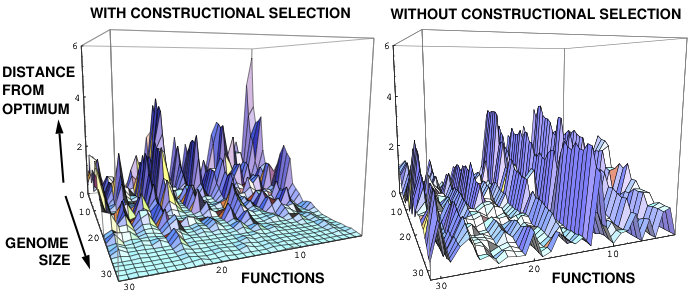

The evolution of new genes is distinct from evolution through allelic substitution in that new genes bring with them new degrees of freedom for genetic variability. Selection in the evolution of new genes can therefore act to sculpt the dimensions of variability in the genome. This “constructional” selection effect is an evolutionary mechanism, in addition to genetic modification, that can affect the variational properties of the genome and its evolvability.
One consequence is a form of genic selection: genes with large potential for generating new useful genes when duplicated ought to proliferate in the genome, rendering it ever more capable of generating adaptive variants. A second consequence is that alleles of new genes whose creation produced a selective advantage may be more likely to also produce a selective advantage, provided that gene creation and allelic variation have correlated phenotypic effects. A fitness distribution model is analyzed which demonstrates these two effects quantitatively.
These are effects that select on the nature of the genotype-phenotype map. New genes that perturb numerous functions under stabilizing selection, i.e. with high pleiotropy, are unlikely to be advantageous. Therefore, genes coming into the genome ought to exhibit low pleiotropy during their creation. If subsequent offspring genes also have low pleiotropy, then genic selection can occur. If subsequent allelic variation also has low pleiotropy, then that too should have a higher chance of not being deleterious.
The effects on pleiotropy are illustrated with two model genotype-phenotype maps: Wagner's linear quantitative-genetic model with Gaussian selection, and Kauffman's “NK” adaptive landscape model. Constructional selection is compared with other processes and ideas about the evolution of constraints, evolvability, and the genotype-phenotype map. Empirical phenomena such as dissociability in development, morphological integration, and exon shuffling are discussed in the context of this evolutionary process.